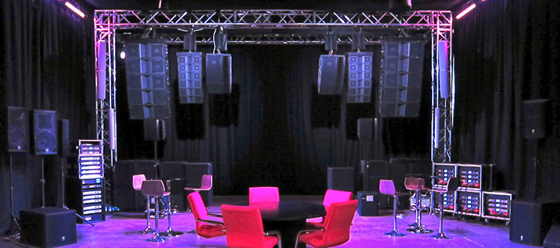Sound On Sound and Sound Technology Ltd are proud to present Live Sound Basics, an evening workshop with regular SOS Live Sound contributor Mike Crofts on Wednesday 31 July 2013.
***PLEASE NOTE THIS EVENT IS NOW SOLD OUT ***


Mike will guide you through the basics of sound reinforcement, drawing of his years of experience running sound for all kinds of concerts from rock to classical, in small venues to outdoor festivals.
In this whistle-stop tour of live sound, you'll learn about the tools of the trade – microphones, mixers, power amps, loudspeakers – and how to use them effectively in a live sound situation.
Using a high-quality analogue desk and a simple PA system for demonstration, Mike will impart practical advice on how to tune the PA system, create Front of House and monitor mixes, and discuss venue acoustics and common problems such as feedback.
There will be a Q&A session at the end of the workshop and an opportunity for informal one-to-one conversations.
The setting for the workshop is Sound Technology's impressive 4000-square foot Pro Audio demonstration facility at their HQ in Letchworth, Hertfordshire. The facility houses a vast array of top live sound equipment from JBL, Soundcraft, Crown, AKG and more.
Part 1. Why do we need a PA system, what does it do, and how does it work?
- The purpose of the ‘P.A.’ system – a means of getting the source material across to the target audience
- Capturing acoustic sounds, and converting them into electrical signals – microphones & pickups
- Amplification of the electrical signal – pre-amp and power amp circuits
- Converting the amplified signal back into acoustic energy – loudspeakers
Part 2. A practical live sound system – what do we need and how do we use it?
- Mics & DIs and how to use them (different mic types, pickup pattern, positioning, direct input from instruments)
- Mixing desk (quick logical tour from input to output)
- Power amplifier (gain, clipping and headroom)
- Speakers (dispersion pattern, crossovers, using speakers in multiples, subwoofers, power handling,active versus passive)
Part 3. Tuning the system
- Frequency spectrum – where voices and instruments sit within it
- Using the mixer – setting input levels and creating a basic mix
- EQ and dynamics
- Creating a monitor mix using auxiliary buses
Part 4. Live sound in practice
- Working in a live acoustic environment – reflections, interference & other problems
- Feedback – why it happens and how to manage it
- Demo – cleaning up a muddy mix
- Demo – how it sounds depends where you are
- Examples of various live sound situations & challenges – inc. dealing with people issues
Part 5. Review and Questions
- Summary of session
- Q & A







